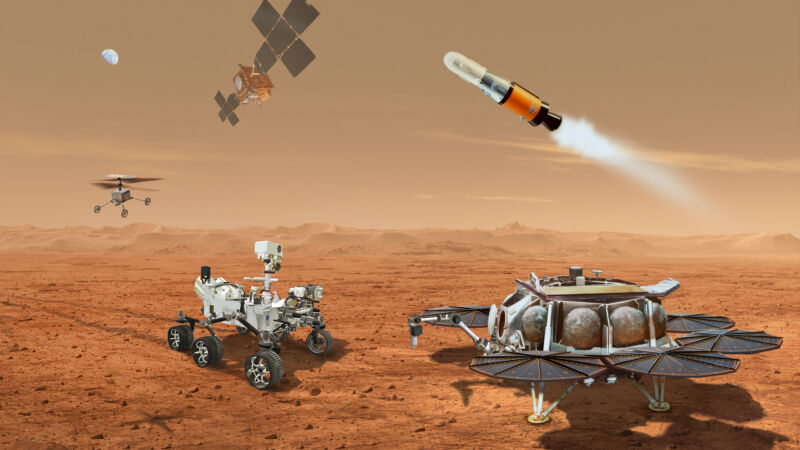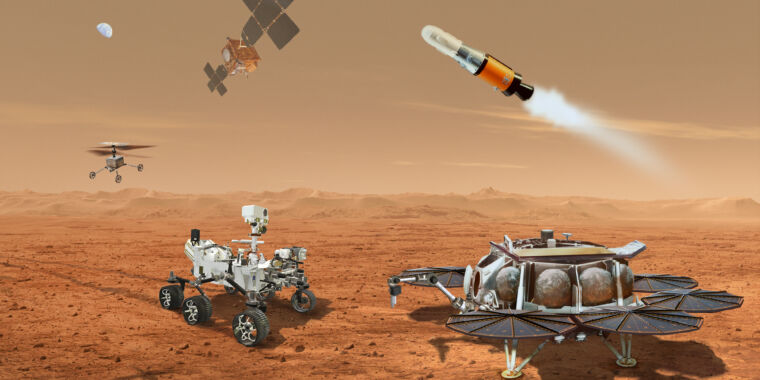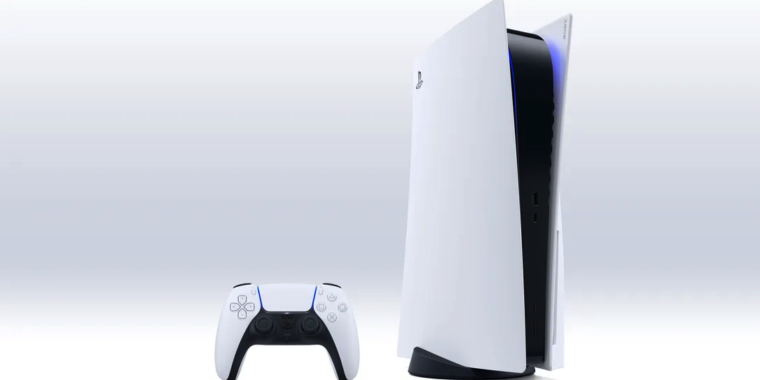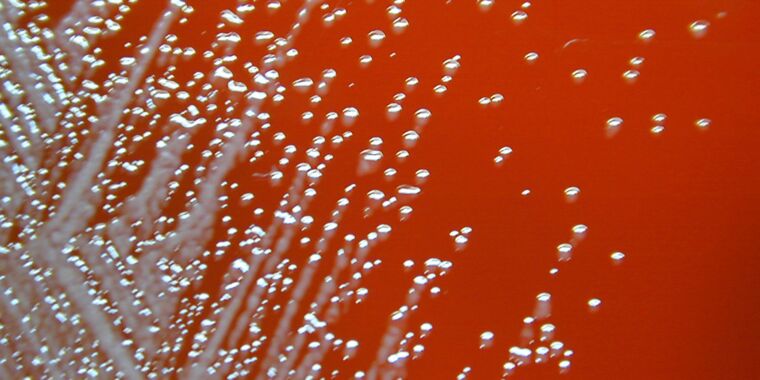
On Wednesday, NASA announced that it had made major changes to its plan for returning samples from the surface of Mars in the early 2030s. Currently being collected by the Perseverance rover, the samples are set to be moved to Earth by a relay of rovers and rockets. Now, inspired by the success of the Ingenuity helicopter, NASA is saying it can lose one of the rovers, replacing it with a pair of helicopters instead.
The Mars sample return plan involves a large collection of challenges, but a central one is that the samples are currently in Perseverance, but eventually have to end up in a rocket that takes off from the surface of Mars. That means that Perseverance will have to get close enough to the rocket’s landing site—which we can’t choose precisely—to exchange the samples, possibly diverting it from scientific objectives. It also can’t be too close when the rocket lands since the rocket’s landing and its associated hardware could pose a risk to the rover and its samples.
The original plan included a contingency. Perseverance would approach after the rocket had landed, and the samples would be transferred directly. If that didn’t work out for whatever reason, a second rover sent to Mars by the ESA would act as an intermediary, visiting a site where the samples had been cached, retrieving them, and then delivering them to the rocket.
In the new plan, that second rover has been eliminated. In its place? Two helicopters. These will be delivered as part of the same payload as the rocket carrying the samples to orbit. As a result, the new plan involves only a single lander (beyond the one that delivered Perseverance) that will carry both the rocket and the helicopters, significantly lowering the risk of the overall plan.
These helicopters, naturally, will be based on the design of Ingenuity, which was sent to Mars as a test vehicle and significantly outperformed expectations, completing 29 flights over a year. Given that experience, NASA is confident that helicopters can be designed to carry small payloads and potentially complete multiple flights between the return rocket and wherever the samples are located—either on Perseverance or at a cache location.
After that, the plan remains the same. The samples will be loaded into a container placed on the NASA-designed Mars Ascent Vehicle carrying them to orbit. There, the container will be transferred to the Earth Return Orbiter, built by ESA, which will get them back to Earth in 2033, at which point they will drop through the atmosphere for retrieval and study.
The next step will be approval by ESA, after which both agencies will start the preliminary design phase, which will handle all the details on the different vehicles that will be needed. Meanwhile, Perseverance has already gathered a dozen samples from the surface of the red planet.








